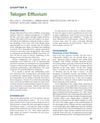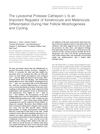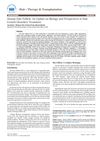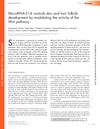ABC of Dermatology: Diseases of the Hair and Scalp
February 1988
in “
The BMJ
”
hair growth cycle anagen phase catagen phase telogen phase telogen effluvium anagen effluvium hirsutism alopecia scarring alopecia non-scarring alopecia androgenetic alopecia alopecia areata autoimmune disease hair shaft defects scalp infections eczema psoriasis hair growth cycle hair loss drug-induced hair loss excessive hair growth male pattern baldness female pattern baldness autoimmune hair loss irreversible hair loss scalp infections scalp eczema scalp psoriasis
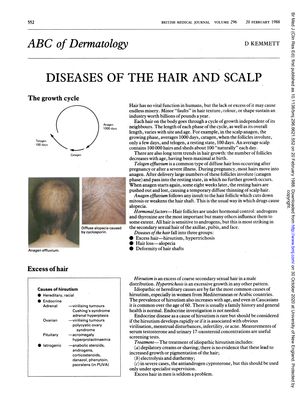
TLDR The document explains different hair and scalp conditions, including common hair loss after pregnancy or illness, drug-induced hair loss, hereditary excessive hair growth, patterned baldness, autoimmune hair loss, and permanent loss due to skin disease, with generally limited treatment options.
The document from 1988 provides an overview of hair and scalp conditions, detailing the hair growth cycle with its anagen, catagen, and telogen phases. It describes telogen effluvium as a common hair loss condition following pregnancy or illness, and anagen effluvium as typically drug-induced. Hirsutism, excessive coarse hair growth in a male pattern, is often hereditary and prevalent among women of Mediterranean or Arabic descent, with endocrine causes being rare. Alopecia, which can be scarring or non-scarring, includes androgenetic alopecia with distinct patterns in men and women, and alopecia areata, an autoimmune disease with an unpredictable outcome. Scarring alopecia, linked to skin diseases, results in irreversible hair loss. Hair shaft defects are noted as rare and genetic. The document also covers scalp diseases like infections, eczema, and psoriasis, and highlights the often disappointing or ineffective treatments available for these conditions.


